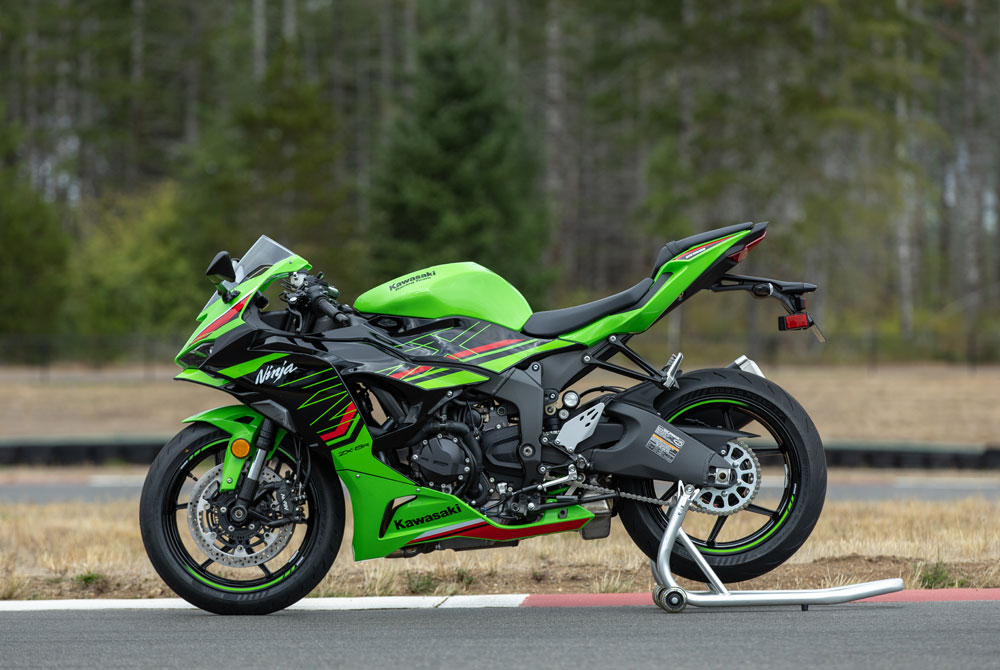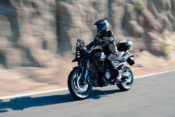The Supersport market is changing quickly, but Kawasaki is staying true to their 636 mantra. We went to The Ridge to check it out.
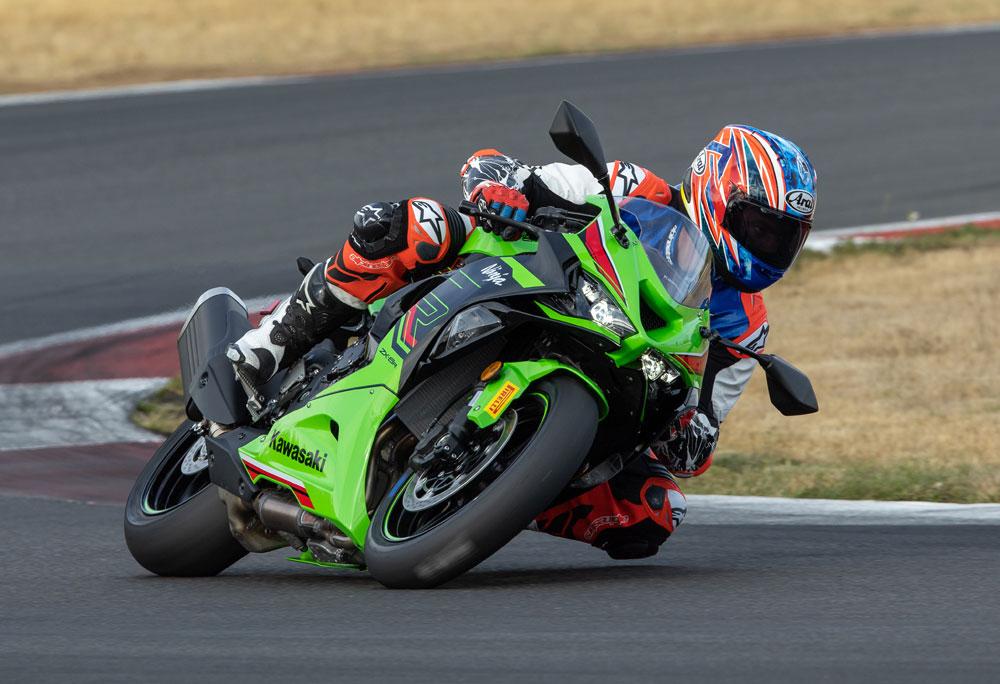
Photography by Kevin Wing
Kawasaki’s 636cc ZX-6R will be around 21 years in 2024, making it one of the longest-serving supersport machines available today. It’s only been outlasted by the CBR600RR and GSX-R600 here in America, and those two are becoming rarer by the year as markets around the world slowly phase out the 600cc inline-four engine.
Supersport rules are changing across the globe, the new rule set ushered in by bikes like the Ducati Panigale V2 and the Triumph 765 Street Triple RS (that you need to convert to race-spec). This new dawn in the class has even given the longest continuing sportbike from a Japanese manufacturer—the Suzuki GSX-R750—a new lease on life.
With that in mind, it may seem surprising that Kawasaki has chosen to remain stagnant by keeping their supersport machine at 636cc, rather than pump some development into it and boost it to 700cc or more to remain competitive with the new breed of rides.
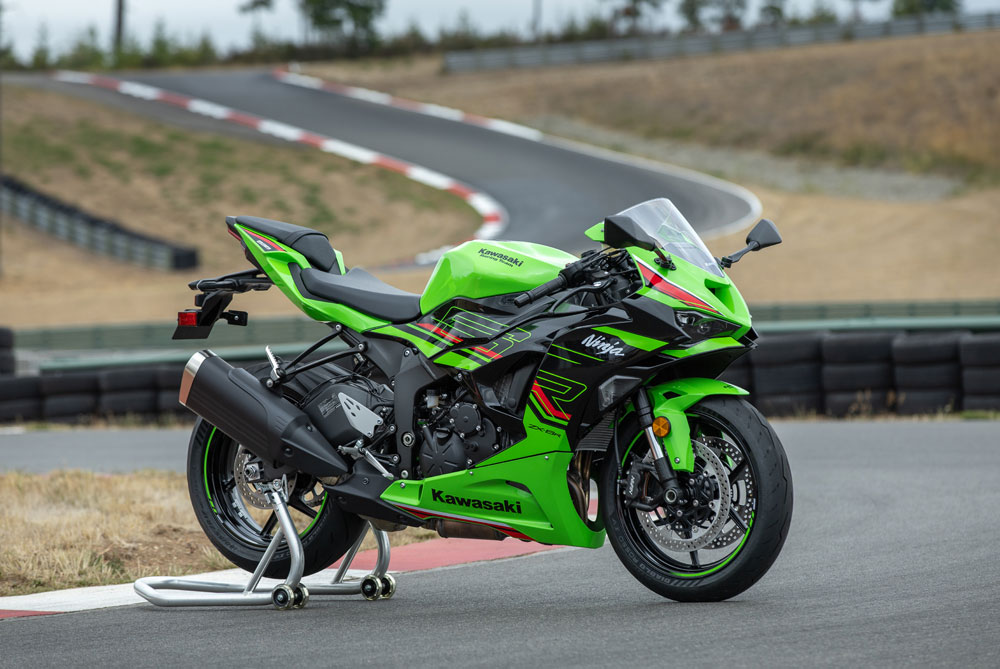
Yet Kawasaki is committed to the 636 platform, which has rightly earned its place in Kawasaki folklore as a dependable, relatively affordable performance sportbike. You’ll not see a return to the ZX-7R any time soon, which is a downright shame in my book.
The beginning price of the 2024 Kawasaki ZX-6R is $11,299, $600 up on the ’23 model. That’s for the one without ABS and KRT-style paint, and it goes up from there. There are actually 12 different 6Rs you can buy—the black, white and KRT models, each in ABS or non-ABS, plus six California-specific models, again, in ABS or non-ABS.
The ’24 6R certainly looks meaner than the long-nose ’23 model did. Sleeker LED headlights and indicators adorn the front end, and if you squint really hard, there are cues of the very first 636 from 2003. (I said squint really hard.)
The cockpit is revised, too, with the 4.3-inch TFT display more commonly found on the ZX-10R, Versys 1000, etc., taking pride of place. That dash gives you access to the Kawasaki Rideology app, one we’ve covered here many times that lets you log your ride, change your bike’s maps, change display settings, etc. I’m not sure how many people actually use the app, but it’s a nice function to have, nonetheless.
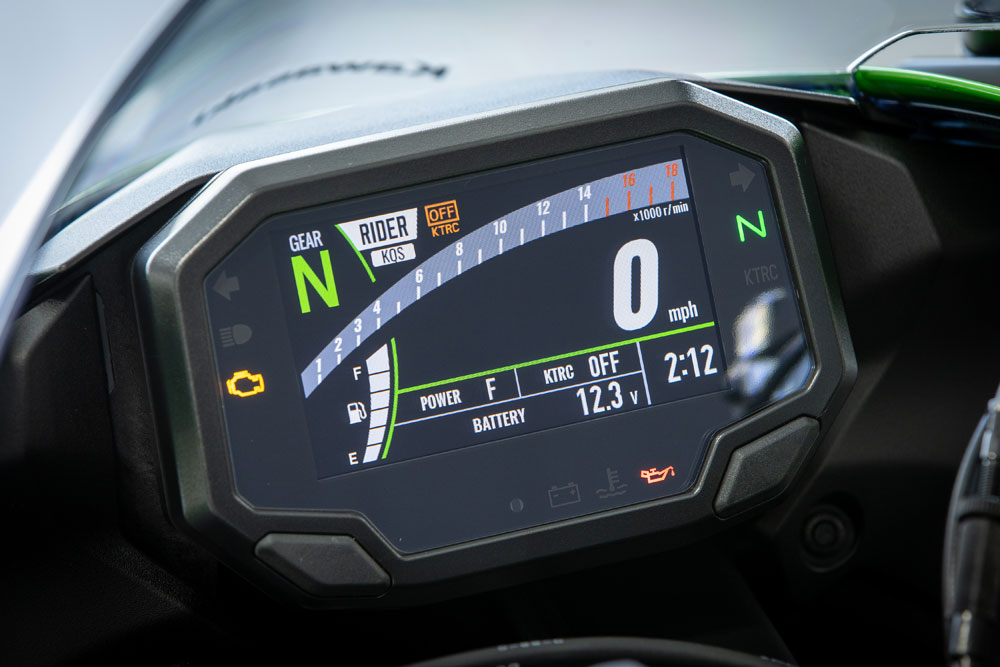
So, what has Kawasaki done to keep the 636 at the forefront of sportbike riders’ minds? Aside from the battered marketing term “bold new styling,” if you answered something like “boost engine performance,” “upgrade electronics to an IMU,” or something else, you’d be wrong.
The 2024 Kawasaki ZX-6R is now more road-focused than ever thanks to slightly revised engine internals that give less, that’s right, less overall performance than it did last year. Supersport machines are all about top-end power. Their very nature leans towards sending the tacho needle into the reds, but for the 2024 ZX-6R, Kawasaki has developed new, “high-lift” camshafts, a revised intake and a new exhaust to move power away from the top-end and given it more low-to-mid rpm performance.
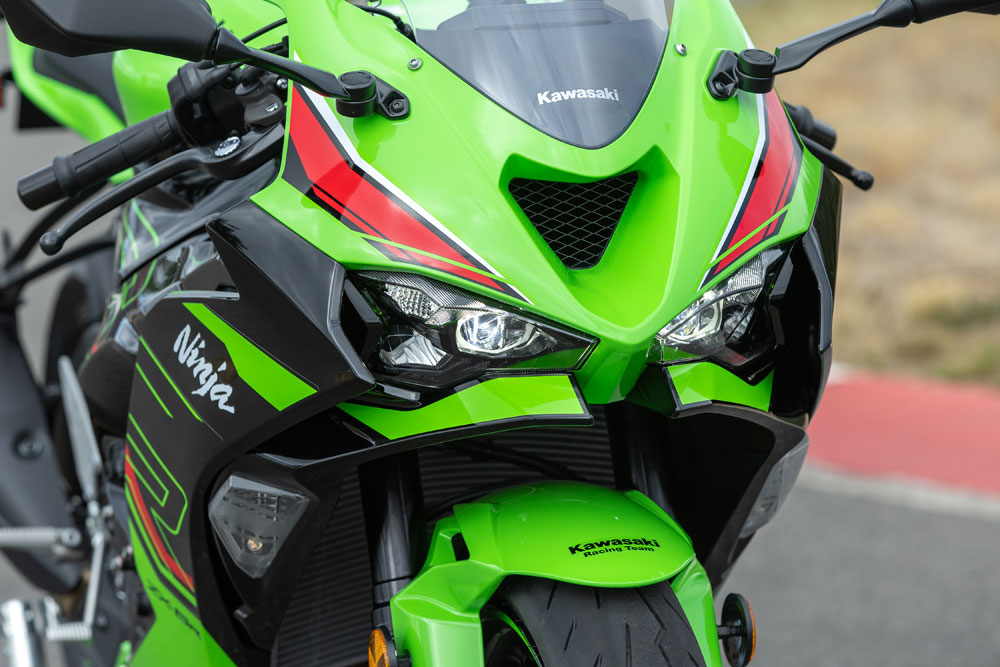
Notice how I said, “high lift,” not “higher lift”? That’s because the ’24 6R’s cams have less lift and a shorter duration than last year, and it doesn’t take a doctorate in mechanical engineering to tell you less air and fuel going into the combustion chamber over a shorter time means less bang and less go.
This new, err, performance characteristic has to do with one thing—emissions. Less fuel and air being burned means less hydrocarbons and allows the ZX-6R to continue to be sold in Europe, which is the only place that matters for sportbike-selling manufacturers. Europe sets the emissions rules the world must follow, but at least Kawasaki is doing what’s needed to keep the 6R dream alive, which is more than can be said for Yamaha, Honda and Suzuki, although you can still buy a CBR600RR and GSX-R600 here, just not there.
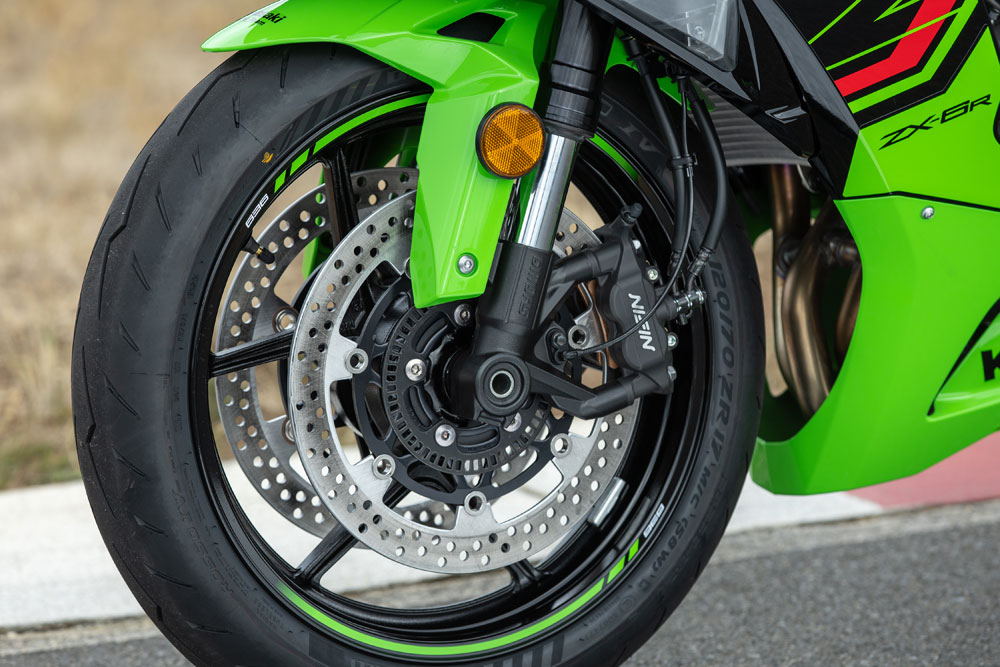
At the handlebars, the new motor feels a little punchier off the bottom of the rev range, but when you wring the thing out into the reds, the 636 tapers off far too early. All meaningful drive is pretty much gone after 12,500 rpm, and although the engine is making all the right noises at this speed, you’re not actually going anywhere.
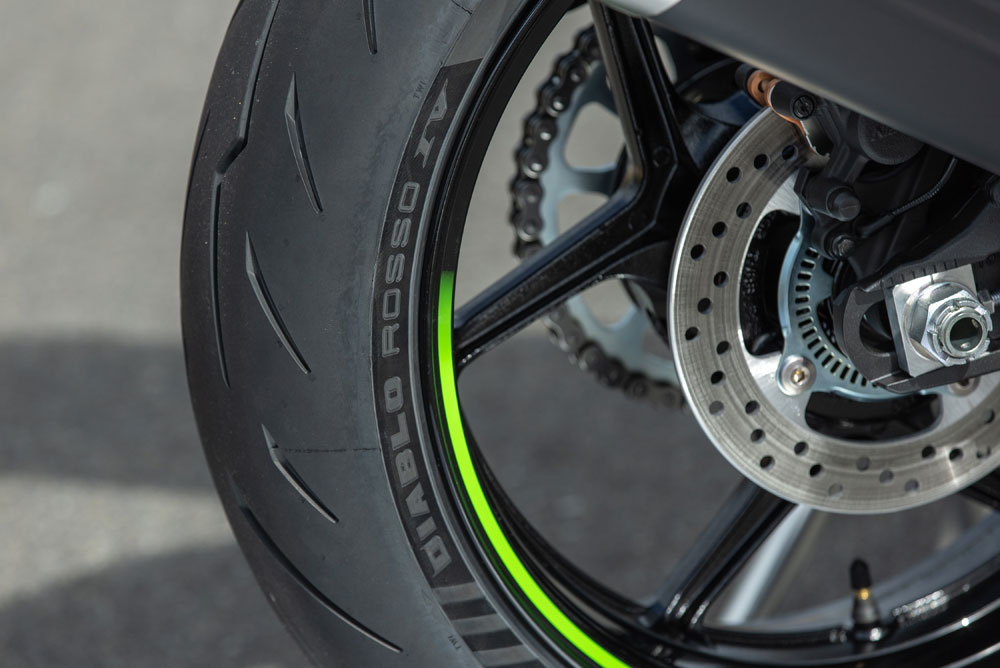
This is a major pain on the track where top-end performance is king, but as I didn’t ride the new 6R on the street, I’ll reserve overall judgment until I do. There’s still plenty of performance to be enjoyed once you’re above 4000 rpm and under that 12,500 rpm threshold, even though there’s another 2000 rpm to go.
The good news is if you’re taking your 636 to the track on a semi- or permanent basis, just throw a set of race-spec camshafts in there, put a racing exhaust on, remap it, and you’ll wake this puppy right up. Not only will you get more overall power and torque, but you’ll be able to smooth out the dips in the torque curve as the motor climbs through the rev range.
The 636 still runs a cable throttle—no ride-by-wire here—and even with the free play taken out as much as possible, the throttle actuation isn’t as smooth as I’d have liked. You can alter this slightly by playing around with the new ECU modes, which is basically what you had last year but with preset levels for power (one of two) and traction control (one of three plus “off”). There’s also the Rider mode that was present last year and before, which gives you the ability to choose what power and traction control level you want.
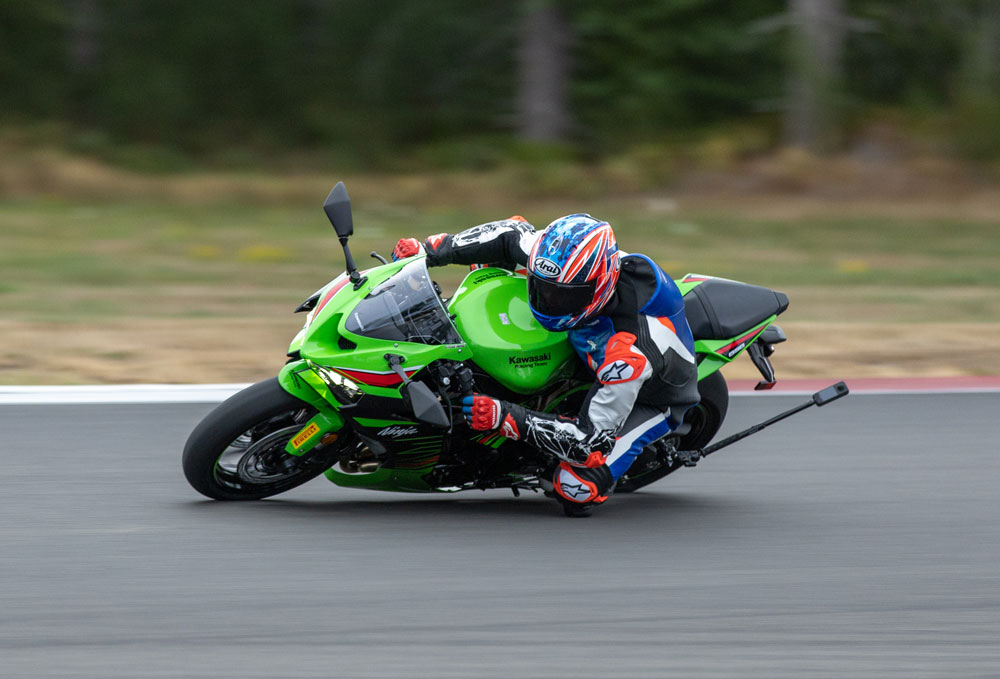
The TC is basic in that there’s no Inertial Measurement Unit so all you’ve got are wheel-speed sensors and throttle position to give the system an idea of when to cut the power. That being said, the system is good enough for the task. I suspect most will just go to level one of three and leave it there, as it gives you a little bit of slip without holding you back too much. Or you could just turn it off. The quickshifter remains active only on the upshifts with no auto-blipper downshift, another hangover from the cable throttle. The shifts are a bit slow for the track, so if you’re going racing with your 6R, you’ll want to upgrade it for faster gearshifts.
The chassis remains unchanged for 2024 aside from new, circular brake rotors, claimed to offer better heat dissipation compared to the petal rotors of last year (not sure how that’s calculated given there’s less surface area on a petal rotor, but what do I know?).
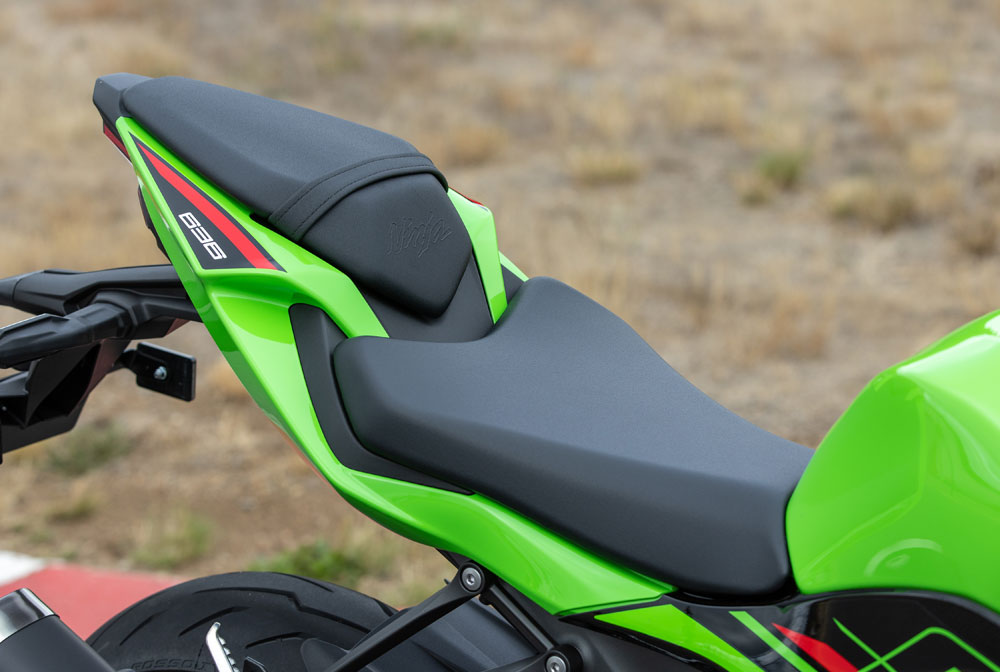
You’ve got the same 41mm Showa SFF-BP (Separate Function Fork – Big Piston) front fork with preload adjustment on the left tube, compression and rebound on the right, and a fully adjustable Showa shock out back. The chassis is one of the strong points of the Kawasaki. Infinitely nimble—although not quite as much as a Yamaha YZF-R6—the 6R’s chassis loves going apex hunting. The ride position is a little cramped for my 6’1” frame—the 6R has always suited the shorter riders out there—but all those years of steady chassis development have made a bike that’s a joy to ride through quick direction changes like chicanes while remaining rock solid when you’re cranked over and feeding the power in.
Overall, I’m a little disappointed the “new” 636 isn’t more new. I get why Kawasaki did the mods they did, and they should be commended for keeping the 600 four-cylinder game alive for as long as they can. But supersport is changing and changing fast, and I wonder how much longer Kawasaki can keep giving little updates to a bike that’s getting pretty long in the tooth before a full revamp is needed.
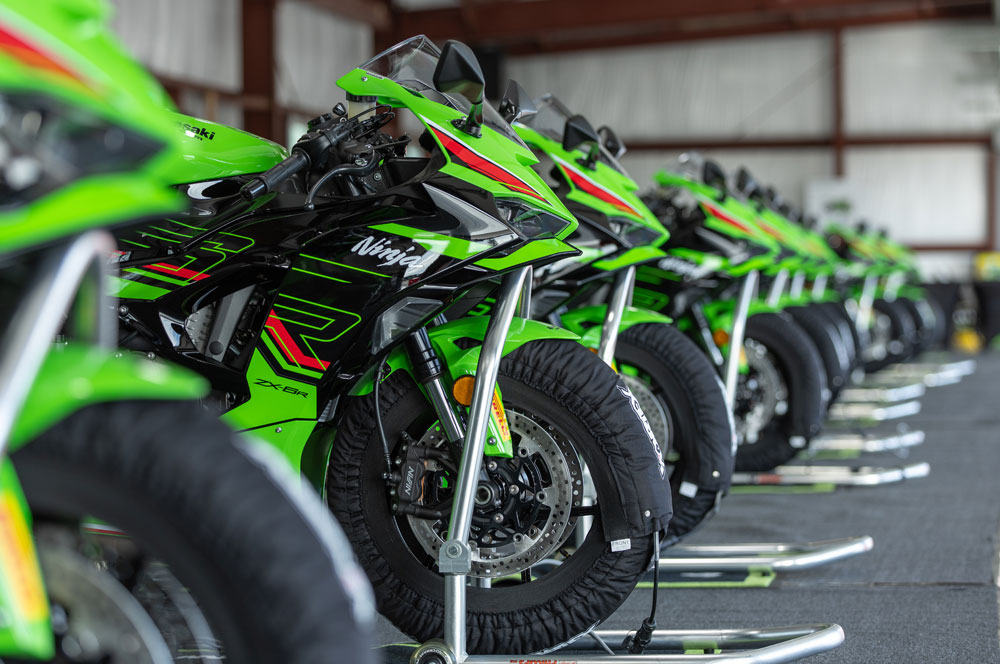
The ZX-6R is an excellent blank canvas that loves a bit of performance tickling, and it’s an excellent machine for club-level racers who want a fast and reliable machine to go wax their buddies on. It doesn’t take much shop time to get good numbers from the 6R, which has always been one of its strong points. But I seriously hope in the next year or two Kawasaki comes out swinging with an all-new, larger-capacity supersport machine to keep riders engaged. CN
Nin
2024 Kawasaki Ninja ZX-6R First Ride
ja ZX-6R
2024 Kawasaki Ninja ZX-6R Specifications
| MSRP: | $11,299 |
| Engine: | Inline 4-cylinder |
| Displacement: | 636cc |
| Bore x stroke: | 67 x 45.1mm |
| Valvetrain: | DOHC, 16-valve |
| Cooling system: | Liquid |
| Fuel injection: | Electronic fuel injection system, 38mm throttle bodies |
| Compression ratio: | 12.9:1 |
| Exhaust: | 4-2-1 |
| Transmission: | 6-speed |
| Clutch: | Wet, multi-plate, slip and assist |
| Electronics: | 3 Riding Modes, two Power Modes, ABS, Traction Control, Quickshifter, full LED lighting, TFT color display |
| Chassis: | Cast aluminum twin-spar |
| Front suspension: | Big Piston SFF-Style 41mm Inverted fork, adjustable preload, compression and rebound damping |
| Rear suspension: | Uni-Trak with adjustable preload, 25-way rebound, stepless high- and low-speed compression damping adjustment and adjustable ride height |
| Front brake: | Dual 310mm discs with radial-mount four-piston calipers, available KIBS |
| Rear brake: | 210mm disc, 2-piston, available KIBS |
| Front tire: | Pirelli Diablo Rosso IV, 120/70 – ZR 17 M/C (58 W) |
| Rear tire: | Pirelli Diablo Rosso IV, 180/55 – ZR 17 M/C (78 W) |
| Wheelbase: | 55.1 in. |
| Seat height: | 32.7 in. |
| Fuel capacity: | 4.5 gal. |
| Weight (curb, claimed): | 425 lbs. |
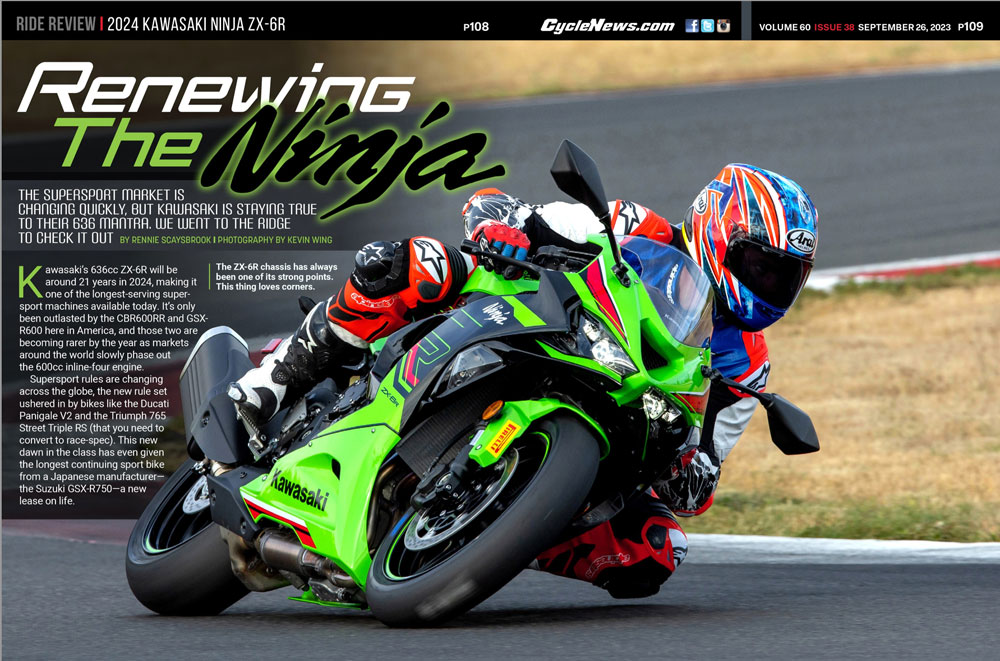
Click here to read the 2024 Kawasaki Ninja ZX-6R story in the Cycle News Digital Edition Magazine.
Click here for the latest Cycle News Sportbike motorcycle reviews and news.
Click here for more Kawasaki motorcycle reviews and news.
